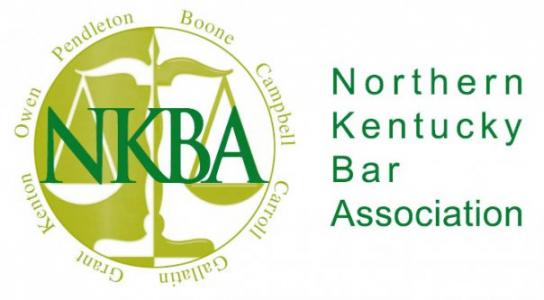Blog
- 2021
- June
- 2020
- August
- June
- March
- February
- 2019
- December
- November
- May
- 2018
- September
- 2017
- July
- February
- January
- 2016
- November
- October
- September
- August
- July
- June
- May
- April
- March
- February
- January
- 2015
- December
- November
- October
- September
- August
- July
- June
- May
- April
- March
- February
- January
- 2014
- December
- November
- October
- September
- Aaron (2)
- accident (1)
- Acena (1)
- adoption (1)
- agreement (1)
- Alimony (1)
- Announcements (4)
- Arnold (2)
- Arnold Taylor (2)
- Attorney (2)
- attorneys (3)
- Auto (1)
- auto (1)
- automobile (1)
- Beck (2)
- bias (1)
- bite (1)
- CCDW (1)
- CHFS (1)
- child abuse (1)
- civil rights (1)
- Civil Rights Act of 1964 (1)
- clean record (1)
- commission (1)
- conceal carry (1)
- conceal weapons license (1)
- conspiracy (1)
- constitution (1)
- construction defects (1)
- conviction (1)
- crime (2)
- criminal (2)
- criminal defense (1)
- David (1)
- David Sloan (1)
- defamation (1)
- department of labor (1)
- Discharged (3)
- Discrimination (5)
- diversity (1)
- divorce (3)
- dog (1)
- DOL (1)
- draw system (1)
- election (1)
- Employment (6)
- Employment Law (1)
- Equal Pay Act (1)
- Estate (1)
- estate planning (4)
- expungement (1)
- Fair Labor Standards Act (2)
- family law (4)
- federal (1)
- federal court (1)
- federal criminal charges (1)
- Federal Labor Standards Act (FLSA) (1)
- felony (1)
- FFCRA (1)
- Fired (2)
- firm (1)
- first amendment (1)
- FLSA (1)
- free speech (1)
- Gary (2)
- Gary Sergent (1)
- government (1)
- grandparent custody (1)
- guidelines (1)
- guilty (1)
- gun permit (1)
- Harassment (2)
- hostile work environment (1)
- hostility (1)
- injured on the job (1)
- injury (1)
- innocent (1)
- intra-corporate (1)
- Jessica (1)
- Jessica Wimsatt (1)
- judge (2)
- judicial (1)
- judicial conduct (1)
- jury trial (1)
- justice (1)
- juvenile (1)
- KBA YLD (1)
- Kentucky (2)
- Know Your Rights (1)
- Labor (2)
- Labor Law (1)
- law (1)
- lawyer (1)
- Lawyers (1)
- legal profession (1)
- liability (1)
- libel (1)
- living will (1)
- Maintenance (1)
- Megan (2)
- Megan Mersch (1)
- Mersch (2)
- Michael (4)
- Michael J. O'Hara (1)
- mine safety (1)
- minimum wage (1)
- motorcycle law (1)
- need attorney (2)
- off-road vehicles (1)
- OHara (3)
- Ohio (1)
- Our attorneys (3)
- Paid Family Leave (1)
- Paid Sick Leave (1)
- parole (1)
- pets (1)
- Planning (1)
- plea (1)
- power of attorney (2)
- Pregnancy Discrimination (1)
- pro se (1)
- probate (2)
- property distribution (1)
- protected class (1)
- race (1)
- recuse (1)
- Repairs (2)
- Ruberg (1)
- school law (2)
- sentencing (1)
- separation (1)
- Sergent (2)
- severance (1)
- sexting (1)
- slander (1)
- Sloan (1)
- social media (1)
- Spousal Support (1)
- state criminal charges (1)
- Sue Cassidy (1)
- super lawyers (1)
- talking to the police (1)
- Taylor (2)
- tender back (1)
- tip credit (1)
- Title VII (1)
- trusts (2)
- victim (1)
- wage and hour (3)
- website (1)
- will (3)
- wills (2)
- wills and estates (1)
- Wimsatt (1)
- workers compensation (1)
- Working off the clock (1)
- workplace discrimination (2)
- wreck (2)
- Young Lawyers (1)
That's Not My Dog - Redux
In a previous blog on the subject of liability for a dog attacking a person, I cited a Kentucky Supreme Court case, Benningfield vs Zinsmeister, for the proposition that a landlord could be held responsible for injuries by a tenant’s dog, if the dog is “on or about” the leased premises. In that particular case, the attack was so far away from the leased premises that the landlord was held not liable.
A recent case decided by the Kentucky Court of Appeals on September 16th, 2015-CA-001259-MR, questions the scope of Benningfield. The case involved a dog attack on a remote portion of a rural, 42 acre tract of land. The trial court gave an instruction to the jury couched in terms of negligence, that is, whether the defendant (the landlord) had reason to believe the plaintiff (the person bitten) would be on his land and failed to exercise proper care over his dogs. The jury found for the property owner. On appeal, the Court cited KRS 258.235(4) and acknowledged that the statute appeared to create strict liability (meaning that a dog bite almost automatically triggers liability regardless of other circumstances), but held that Benningfield could not be used to support a strict liability instruction. That case, the opinion recites, was a fractured opinion, being decided by less than a unanimous Supreme Court, and the Court of Appeals held that knowledge of the landowner was in fact relevant and compelled the instruction given.
This latest case raises several issues: first, to what extent must a Supreme Court decision be merely a plurality (not unanimous) decision to allow a Court of Appeals panel to ignore it; second, if a lack of unanimity is significant, how can this case be of any value, given that one judge concurred and another dissented; third, since the Supreme Court (or at least some members) construed the statute as requiring that the attack be on or about the leased premises, does that not mean that the 42 acre size of the defendant’s land is irrelevant; or that the future holds some sort of ruling that 42 acres is too big but 15 acres is too bad for the farmer?
Given the discounting of Benningfield, one would think that the Supreme Court might be inclined to grant a Petition for Discretionary Review.
Author: Arnold Taylor, Senior Partner at ORTSS







